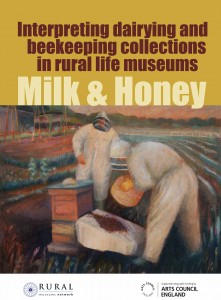The Rural Museums Network initially conducted a survey of dairying collections in the UK for the Agricultural Heritage Distributed National Collection in 2006:
Distributed National Collection – Sorting the Curds and Whey
 Museum involvement in manufacturing is problematic for food safety reasons but the scale and diversity of the topic make it important. The Network revisited these collections and their interpretation, reviewing them alongside those of beekeeping. The themes of Milk and Honey were explored further in this resource by Sally Ackroyd.
Museum involvement in manufacturing is problematic for food safety reasons but the scale and diversity of the topic make it important. The Network revisited these collections and their interpretation, reviewing them alongside those of beekeeping. The themes of Milk and Honey were explored further in this resource by Sally Ackroyd.
Grass grows well across most of the UK, and we have developed patterns of agriculture to make the most of this. Cattle graze grass and dairy cattle have been bred to produce high quantities of milk. Before refrigeration, milk would quickly go sour and farmers turned it into butter and cheese.
Particular breeds of cattle and dairying practices evolved throughout the UK to give us our distinctive cheeses. Dairying also needs specialised equipment, often locally made, and products have to be packaged for transport and sale. Rural life museums recognise the potential of these activities and materials to convey a ‘sense of place’.
Nowadays there is considerable interest in locally produced food, and a wider range of dairy products is more available than ever, including ice creams and yoghurts:
Milk and Honey, interpreting beekeeping and dairying collections in rural life museums

